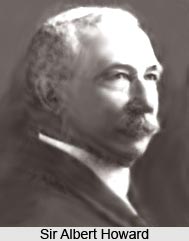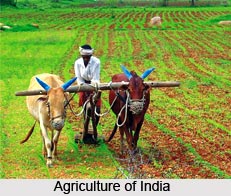 Agriculture was a staple livelihood in India from a prehistoric age, with numerous options available for farming and crops and harvest; although a strict oriental system was followed to make things done. In short, with loads of hidden treasure lying buried in native soil, the country was awaiting a scientific process to reveal those. And with British government diving into the development in agricultural work, numerous innovative ideas came up. Special schools were established; tests were conducted on lands, including acts being passed for land and plantation safeguard. Hence, a pan-Indian agricultural development was noted in British India.
Agriculture was a staple livelihood in India from a prehistoric age, with numerous options available for farming and crops and harvest; although a strict oriental system was followed to make things done. In short, with loads of hidden treasure lying buried in native soil, the country was awaiting a scientific process to reveal those. And with British government diving into the development in agricultural work, numerous innovative ideas came up. Special schools were established; tests were conducted on lands, including acts being passed for land and plantation safeguard. Hence, a pan-Indian agricultural development was noted in British India.
In 1901, the Government of India appointed an Inspector-General of Agriculture to administer programmes of scientific investigation and to oversee research in agriculture.
In 1905, the Imperial Agricultural Research Institute of Pusa in Bengal was established and in 1906 placed under the charge of Sir Albert Howard (1873-1947). Howard conducted numerous tests regarding soil aeration, irrigation, pollination and cross fertilisation of species, growing cycles, manuring of crops, harvesting, processing and packing of crops. He applied these measures to wheat, tobacco, fruits, vegetables, hemp and various oil seeds. Agriculture was such a domain which was an established norm from prehistoric times, India being a pastoral country. However, agricultural developments like implementing scientific methods in harvesting or grounding machines for faster production needed a proper guideline to start with. And that was aptly supplied by British.
Within the period of 1910-1916, Howard`s programmes for breeding new varieties of wheat at Pusa and Quetta greatly extended the potential for Indian foodstuffs. Much of the Institute`s research findings appeared in the Agricultural Journal of India.
In November 1905, the Government of India placed in its 1905-06 budget twenty lakhs of rupees in support of agricultural research, equipment and education. Monetary needs were looked after for an all-round development in agriculture. The haphazard, rather un-knowledgeable way of doing work was broadly changed by an English outlook towards agriculture.
The Government of India Act of 1919 transferred control of agriculture from central to provincial control. This resulted in the unfortunate fragmenting of research in agricultural science.
In October 1924, the Institute of Plant Industry was created at Indore with Howard as its first director. From this point agricultural research moved from the auspices of the Government of India to the support of the commercial sector. The Institute held closely to the practice of applied research and focused particularly on the growth and processing of cotton.
As an unsuccessful consequence to development in agriculture under British government, in 1927, the Royal Commission on Agriculture in India rendered its report.
In 1929, the Indian Council of Agricultural Research was established to coordinate agricultural research whilst propagating its findings.






































